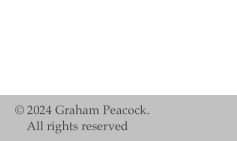 |
 |
||||
ARTIST GROUPS: What's New?Ken Carpenter. Art in America. July 1, 1999: Page 51 Taking a cue from the Impressionists, who styled themselves Independents and stood outside the values of the dominant institutions of their day, the New New Painters reject many of the most prevalent trends in contemporary art practice. They have reacted against postmodernism and all the urgent calls in the last few decades for para-meaning, cultural criticism, and the questioning of gender and identity. Likewise, feminism is a nonissue for the four women members, at least as artists. The New New Painters work with a blithe confidence in the value and relative autonomy of esthetic experience, and a conviction that the medium of painting has not been exhausted. For Moffett, their first champion and co-author of a book on them, the New New Painters represent both an involvement with and a break from the Color Field painters. The uninflected paint surfaces of the earlier artists give way to the sculpted surfaces of the New New, which they build up with acrylic gel, reflective "interference" paint and, in this exhibition in particular, numerous added elements such as Styrofoam, marbles and broken glass. To Moffett, they "revivify abstraction," and "constitute the most exciting new movement" in painting in 26 years.' While Donald Kuspit acknowledged the material innovations and consequent "new expressive possibilities" of the New New, he argued in a 1896 catalogue essay that their most vital innovation was to rescue high modernism from a presumed emotional "insensitivity" and even a "neutralization . . . of self" in the later Olitski and Poona. Seeing in the New New Painters a very personal and "unembarrassed sense of soul," Kuspit celebrated them as modernists with a kind of postmodern intent This exhibition and the informative catalogue entries by Sue Scott confirm that Moffett and Henry were correct to emphasize the material innovations of the New New painters. Their art, with its advanced gels and custom-made reflective paints from Sam Golden, was technically impossible 16 or 20 years ago. But they are also distinctive in other ways. Somewhat unfashionably, the New New Painters take Louis, Noland, Olitski and the Canadian Jack Bush as the most accomplished and fecund artists in the generation immediately preceding them. Looking at the generation before that, many of them admire not only Pollock, Motherwell and Gottlieb, but also Hans Hofmann, with his affirmation of "mainstream art" and his emphasis on the dynamics of visual syntax This makes it all the more puzzling that technical and syntactical problems vitiate some of the works. In El Nino (199'n by Lucy Baker, perhaps the most exuberant artistic personality in the exhibition, the fluorescent hologrammed glitter and marbles cannot disguise a disruptive figure-ground dichotomy. In Bruce Piermarini's Functional Fit-Diptych (199, the colors, for all their inherent dynamism, seem to be juxtaposed quite thoughtlessly. In an adjacent room of the FIA there were good examples of Frankenthaler, Krasner, Motherwell and Gottlieb. Only a few of the New New Painters are able at present to withstand the comparison. Another New New commonality is a group Aesthetic consistent with Hofmann's idea that art is, ultimately, joyous-at least in part. For Kuspit, the New New joys are supremely dialectical: "libido and the death instinct-gloom and glory-fuse."3 Yet overall, this is a remarkably ebullient, almost a cheery, exhibition. Despite Kuspit's claims, then, sometimes the New New give the impression their art is not solidly rooted in life experience but in playing with paint. Most strikingly, Piermarini's Stone in My Heart (1998), with painted forms protruding a foot in front of the canvas, is more comic than convincing. But at their best, the New New are not merely playful but inventive. Graham Peacock's method of pouring one layer of paint over another not-quite- layer produces a crackle or "crazing," and a fusion of colors, that is central to his accomplishment in Rock Silver (1996-97), with its Whistlerian palette and very personal response to nature. Joseph Drapell's notched paint-spreading device has fueled his creativity in Gates of Life (1998), where the motility of his sumptuous color is rendered consistent with a noble repose. Marjorie Minkin's layered, undulating, irregular sheets of the industrial plastic Lexan in Strata (1993) seem, as Scott observes, "more iced than painted" and simultaneously evoke the human figure, abstracted caryatids, and stone formations sculpted by wind and water.4 Anne Low shows a particular gift for monochrome and her own quite personal version of indeterminate space in Jumpstart and Short Circuit (both 1997). Among the younger artists, Roy Lerner, who is engaged with both jazz (Miles Davis) and South American tapestries, generates rich visual complexity in Rhapsody on the Phone (1996). The New New Painting is a relatively mature development by now, and some of these artists seem to be faltering in the last few years, especially those who have veered closer to the group esthetic. John Gittins has expanded his color range in GW (1997), but the half dozen or so dominant hues are combined rather gratuitously, as was not the case in Guadalupe (1987). Steve Brent has allowed a few individual strokes in Set Point (1997) to declare themselves as quite arbitrary shapes, and so it lacks the film cohesion of the very successful Cartouche (1986). Marjorie Minkin's Anu (1997), with its distracting flurry of autonomous strokes, is weaker than Strata. On the other hand, the recent work of Jerald Webster and Irene Neal would seem to be their strongest: increasingly sculptural paintings that stem from a prolonged meditation on the proper balance of improvisation and conscious will in making art. |
|||||